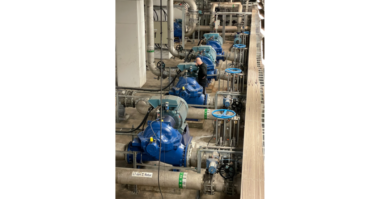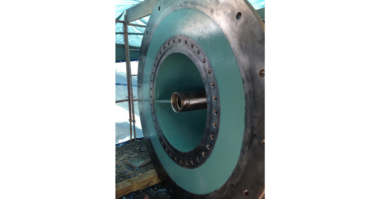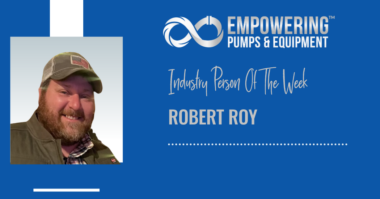Due to the latest API Standards 622 & 624 (624 is currently marked on the API website as expected to be released in2014), the valve industry is buzzing with questions as to how the new emissions regulations will affect operations and design plans. According to the VMA: “Valves are considered to account for approximately 60% of Fugitive Emissions of a Refinery.” This alone makes it quite clear why the EPA has honed in on this latest valve emissions standards focus.
According to the 2014-2016 EPA National Enforcement Initiatives statement, the EPA will be involved in heavy compliance monitoring regarding three specific areas of concern related to public health and ecological concerns:
- Leak detection and repair
- Reduction of the volume of waste gas to flares and improvements to flare combustion efficiency
- Excess emissions, including those associated with startup, shutdown, and malfunction
Industrial organizations failing to comply with the latest standards can expect to meet with financially painful consequences, in the form of Consent Decrees, and potential operational disruptions.
What are API 622 & API 624 Standards?
Quick ideas of what each of these API Standards relate to is apparent from the full title of each:
API 622: Type Testing of Process Valve Packing for Fugitive Emissions
API 624: Type Testing of Rising Stem Valves Equipped with Flexible Graphite Packing for Fugitive Emissions
API 622 is an important standard to fully comprehend because it is not merely a performance test standard. Rather, within API 622 are a variety of requirements involving tests to ensure the reduction of fugitive emissions within all industrial valve usage scopes. The API 622 standards publication description states:” Factors affecting fugitive emissions performance that are considered by this standard include temperature, pressure, thermal cycling, mechanical cycling, and corrosion.”
FSA notes on API 624 include: “the standard will use EPA Method 21 as a basis for the evaluation of fugitive emission, with the leakage limit set at 100 ppm methane. It requires that the tested valve packing be previously tested according to API 622 and be suitable for use at service temperatures -29° C to 538° C (-2° F to 1,000° F).”
The key to these two standards is the fact that they are harmonized. Packing has to be tested to API 622. Valves are tested to API 624, and the packing used in the valve to be tested must have already been tested to API 622.
In order to learn more about the effects of emissions release regulations on the valve industry, we at EmpoweringValves.com sought out a few industry leaders well-known for their expertise in both valves and the updates to EPA regulations through the years. Our interviews with three valve industry experts employed by at Chesterton, a global solutions provider, were very enlightening. They are:
- Scott Boyson, Global Business Development Manager
- Walt Moquin, Global Product Line Manager
- Phil Mahoney, Engineering Design Manager for Sealing Devices
These three established valve industry thought leaders at Chesterton provided a great deal more insight about the emissions release issues affecting the global industry, as well as many details surrounding API Standards 622, 624, and even previous API Standards with which they have been helping their clients learn how to achieve compliance.
Interviews with thought leaders at Chesterton
Phil Mahoney has been working with Chesterton for 24 years. When we spoke with Phil, he very thoroughly detailed the importance of testing, the many levels of internal and third party testing of valves, and the intricate challenges associated with engineering design of products to meet EPA regulations. Phil says that theory doesn’t always match the end result; predictability with compression packing and design can be a much more challenging issue than one might expect; and that merely protocol alone does not tell you what a pass or fail for a product is.
His engineering design experience and focus was evident when discussing with him the effects of emissions regulations on the valve industry. When asked what he hopes to see for the future of the valve industry he stated: “I am hopeful that standardization increases on a global scale. For example, there are entirely different measurement rules in the U.S. versus in Europe. As standardization continues to affect the way methodologies are shaped, the industry’s ability to deliver testing best practices will continue to increase, thereby enabling the assurance of higher compliance rates and fugitive emissions reduction.”
We wanted to collect unique perspectives of valve industry thought leaders who work in different areas and therefore might have a different take on the ways in which emissions standards affect the valve industry, so we then had the pleasure of speaking with Walt Moquin who has been with Chesterton for 32 years.
Walt explained that he personally is affected by emissions standards in his product line management role because the bottom line is that the product he represents must meet both the expectations and the standards of the EPA and of the specific needs of each client. Products Chesterton provides which stand out in his mind above the rest in terms of the effect from emissions standards and in helping client companies meet their requirements is that related to valve packing and their current flagship product, 1622, targeted specifically for block valves applications.
Walt commented on the importance of EPA standard, API 622: “API 622 sets a common protocol all vendors have to comply with. This is a big change from the past, but now with these uniform test protocols, customers are better able to compare “apples to apples” so to speak…”
Additionally, Walt stated that Chesterton helps valve manufacturers in addressing needs related to the latest API standards and provides informative assistance, as well as helps with the fact that these products will require testing for emissions performance to prove they are up to par. Professionals at Chesterton work heavily with the manufacturers to qualify these products using their own in-house testing facilities.
Finally, we were privileged to speak directly with Scott Boyson who has been with Chesterton for 28 years. Scott assists global customers in refineries, petrochemical, and chemical manufacturers by working as a facilitator between companies to help ensure their needs are met and they are educated regarding the impact of standards/regulations as they relate to specific products for existing and new systems.
Scott stressed the critical role of best practices and mentioned how this relates to the way the EPA develops new standards: “The EPA wants to make sure that the best practice recommendations they publish are practical for all involved. In order to accomplish this, they communicate with organizations such as the FSA, they communicate with the people at the actual plants, and they communicate with the technology innovators in order to ensure that technology actually exists to support the API standards they create.”
When Scott was asked why there is so much help needed in the industry in order to increase the availability of knowledge regarding valves he explained, “Help is needed because each of the organizations typically only have very few people who are disseminating the information about the valves and this practical information can only spread from there. This leaves a lot of opportunities for growth in terms of information sharing across the board in the valve industry.”
Valve industry educational support is the key to progress
Phil, Walt, and Scott all additionally stressed the fact that not only the design of the valve product, nor just the valve packing by itself ensures the best fugitive emissions reduction. They all emphasized the importance of educating plant personnel on the actual installation process. If a valve and valve packing is not installed properly, it is not possible to ensure best practices are achieved in the reduction of emissions release.
Additionally, there are details involved in the use of related system sealing components to ensure that any potential releases are redirected properly and prevented from escaping into the environment.
One of the services provided by the experts at Chesterton is exactly that of working as educational consultants to share their knowledge and enable industry compliance. Thought leaders at Chesterton have also directly made various online content contributions such as the whitepaper authored by Scott Boyson: Do Your Valves and Packing Technology Requirements Meet Current EPA Requirements?
The professionals at Chesterton all also stressed the importance of not only ensuring that EPA requirements that have already been established are met, but also the vital role of the preparation process achieved through involvement in the development of these standards, which helps Companies prevent as much catch-up work to meet challenges created by new standards when they are first released.
At EmpoweringValves.com our team has been working diligently to establish a strong valve industry community where members of all areas of the valve and related industrial systems industry can come together to both learn and discuss the detailed information they require, as well as discover an easy way to find the experienced sources they need to contact to get each question answered.
Together we can help one another learn how to stay on top of the latest environmental regulations affecting plants around the globe, as well as how to ensure safety and compliance with the proper use of the latest technology becomes a reality across the board.
About Walt Moquin:
 Walter S. Moquin is currently Global Product Line Manager for Mechanical Packings and Gaskets with the A. W. Chesterton Company where he oversees the business for pump and valve packings and is currently focused on valve fugitive emissions sealing . He has a Bachelor of Science in Engineering from Lowell Technological Institute and an MBA from the University of Lowell in Lowell, MA, USA. With over 30 years experience working with a variety of industries, he has conducted technical equipment reliability seminars and training regarding process systems and components. He was also responsible for field testing of new products, failure analysis, and application engineering . He has also managed the development , site implementation and training of valve sealing software for the nuclear power industry. He can be contacted at moquinws@chesterton.com
Walter S. Moquin is currently Global Product Line Manager for Mechanical Packings and Gaskets with the A. W. Chesterton Company where he oversees the business for pump and valve packings and is currently focused on valve fugitive emissions sealing . He has a Bachelor of Science in Engineering from Lowell Technological Institute and an MBA from the University of Lowell in Lowell, MA, USA. With over 30 years experience working with a variety of industries, he has conducted technical equipment reliability seminars and training regarding process systems and components. He was also responsible for field testing of new products, failure analysis, and application engineering . He has also managed the development , site implementation and training of valve sealing software for the nuclear power industry. He can be contacted at moquinws@chesterton.com
About Scott Boyson:
 Scott Boyson is responsible for Chesterton’s valve sealing business and has over 15 years experience working with many of the world’s largest Valve OEM, process industry end-users, and valve repair shops to assist them in their sealing efforts. He has been directing Chesterton’s efforts to meet the stringent sealing requirements that are facing the industry.He travels extensively around the globe to work with a variety of industries with a focus on refinery, petrochemical and power markets. He has published and presented technical papers. He is an active participant on multiple standards and a member of the Fluid Sealing Association.
Scott Boyson is responsible for Chesterton’s valve sealing business and has over 15 years experience working with many of the world’s largest Valve OEM, process industry end-users, and valve repair shops to assist them in their sealing efforts. He has been directing Chesterton’s efforts to meet the stringent sealing requirements that are facing the industry.He travels extensively around the globe to work with a variety of industries with a focus on refinery, petrochemical and power markets. He has published and presented technical papers. He is an active participant on multiple standards and a member of the Fluid Sealing Association.
About Phil Mahoney:
 Phil Mahoney is currently the Design Engineering Manager for Compression Packing and Mechanical Seals for the A.W. Chesterton Company. He has a BS in Marine Engineering and an MS in Engineering Management. With over 20 years of experience in the sealing industry, he has held various engineering positions including Applications Engineering, Product Management and New Product Development. Phil is currently the Chairman of the Compression Packing Group within the Fluid Sealing Association (FSA).
Phil Mahoney is currently the Design Engineering Manager for Compression Packing and Mechanical Seals for the A.W. Chesterton Company. He has a BS in Marine Engineering and an MS in Engineering Management. With over 20 years of experience in the sealing industry, he has held various engineering positions including Applications Engineering, Product Management and New Product Development. Phil is currently the Chairman of the Compression Packing Group within the Fluid Sealing Association (FSA).




